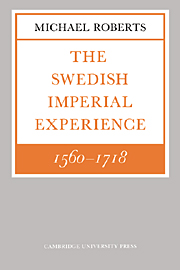I - The making of the empire
Published online by Cambridge University Press: 06 January 2010
Summary
the sixteen and seventeenth centuries saw the foundation of those great modern empires in whose liquidation it has been our dubious destiny to acquiesce: the empires of Portugal, of Spain, of the Dutch, of England, and of France. Two of them, at all events – those of the Dutch and of Portugal – were based on small countries, neither of which had hitherto shown any likelihood of emerging as a great power, and they must always appear astonishing outbursts of energy: in the long view, perhaps, historical aberrations which Time must sooner or later rectify. But whether aberrations or no, they were, for good or ill, such remarkable records of human achievement, and set so deep an impress on vast areas of the world, that they must remain of perennial interest to the historian, troubling the ocean of history like those unpredictable freak waves which make the seas breasted by their caravels so formidable to mariners.
But the sixteenth and seventeenth centuries provided another example of imperial expansion, which at first sight must appear equally improbable; and which did indeed astonish contemporaries: the empire which Sweden made for herself in the Baltic, and in Germany, in the century between 1560 and 1660. And it is that empire which I hope to analyse in these lectures. For the most part it was acquired at break-neck speed: less than forty years separates the capture of Riga (1621) and the peace of Oliva. Its disintegration was equally swift: it may be said to have begun in 1702, when Peter the Great took Noteborg (the future Schliisselburg); and it was virtually complete when, sixteen years later,
- Type
- Chapter
- Information
- The Swedish Imperial Experience 1560–1718 , pp. 1 - 42Publisher: Cambridge University PressPrint publication year: 1979

